The 808 drum machine is an iconic piece of gear that has influenced multiple genres of music for decades.
Knowing how to creatively use your 808s can elevate your tracks from good to extraordinary.
However, if you just stick to the same old techniques, tips, or tricks, your beats will be as stale as a loaf of bread left out in the open.
That’s why we’re breaking down everything you need to know to make your 808s shine.
In today’s article, we’ll cover:
- The history of the 808 ✓
- Anatomy of an 808 ✓
- Differences between 808 & acoustic drums ✓
- Analog synthesis in 808 ✓
- Creative techniques, tips, and tricks ✓
- Advanced 808 methods ✓
- Mixing and choosing samples ✓
- Much more ✓
By the end of this guide, you’ll be armed with a plethora of creative strategies to make your 808s stand out.
As well as produce epic beats that not only sound fresh but can also set you apart in a crowded music landscape.
Get ready to unlock the full potential of your 808s and give your music the recognition it truly deserves.
Let’s dive in…
Table of Contents
808 History & Background
It’s hard to overstate the significance of the 808 drum machine in shaping modern music, especially in genres like hip-hop, pop, and dance music.
But do you know the fascinating story behind this iconic instrument?…
-
The Roland TR-808 Rhythm Composer: A Game Changer
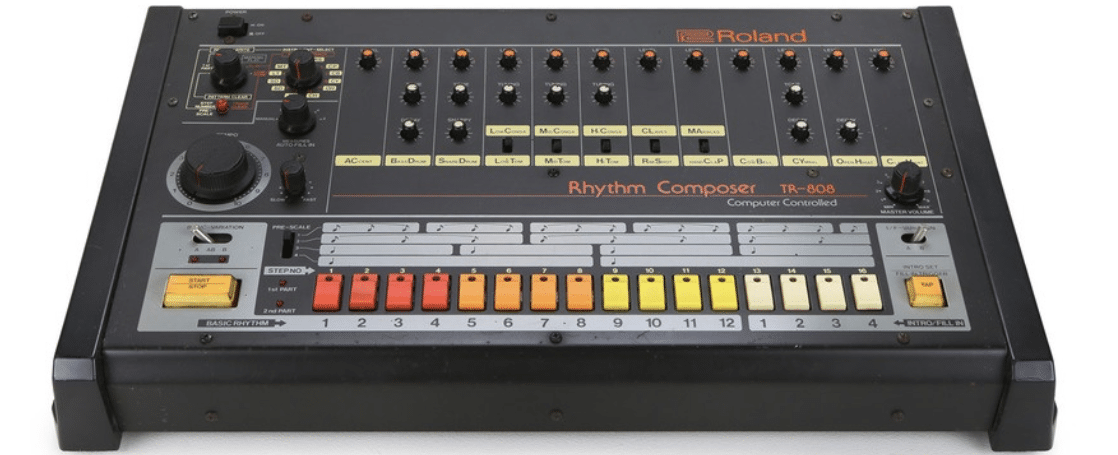
Back in the day when the Roland TR-808 Drum Machine was launched, it was nothing less than a revolution in the music industry.
This drum machine became an instant hit among hip-hop producers, eventually crossing over to other genres as well.
Why?… Because the TR-808 was the first drum machine that allowed musicians to program and create beats from scratch.
In the late 80s and early 90s, hip-hop music was still a growing genre.
The Roland TR-808 came as a godsend 一 offering new possibilities for beat-making.
It wasn’t just another electronic drum machine; it was a music creation tool that enabled producers to develop beats that hadn’t been heard before.
But it wasn’t just hip-hop that felt the influence of this game-changing machine.
Pop music and dance music were equally affected.
The Roland TR-808 offered an electronic alternative to an acoustic drum kit, which changed the sonic landscape forever.
-
From Commercial Failure to Music History
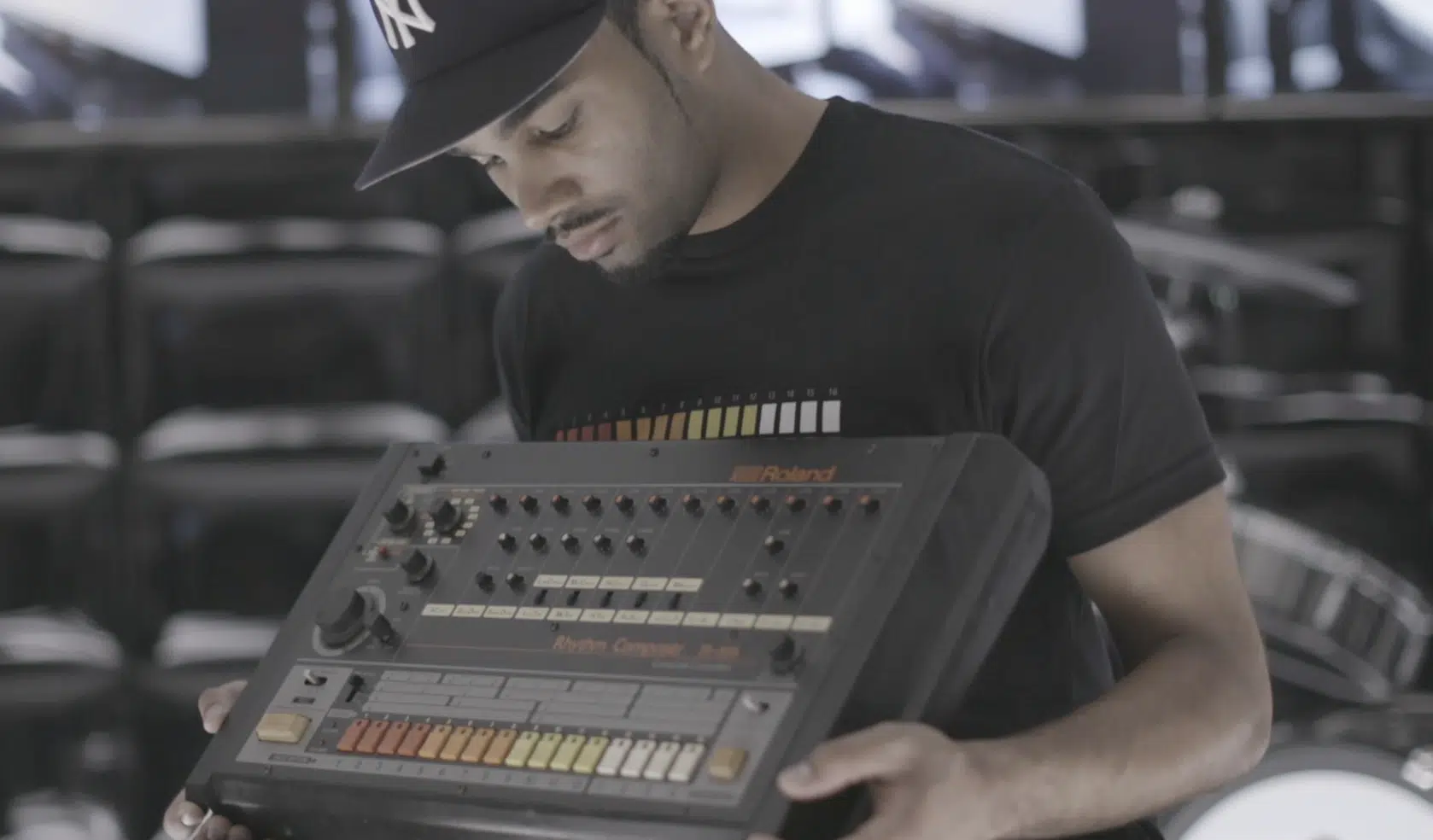
Ironically, despite its groundbreaking features, the TR-808 was initially considered a commercial failure.
The reason?…
It couldn’t recreate the sounds of a real acoustic drum kit accurately enough for the tastes of established musicians at the time.
But what started as a commercial failure is now a key chapter in music history.
The TR-808 found a second life in underground scenes (specifically hip-hop) where its unique sound was celebrated rather than shunned.
It moved from being an early prototype that was largely dismissed, to becoming a classic that would define generations of music.
So, while the Roland TR-808 was initially criticized for not producing realistic-sounding drums, it gained fame for its unique sonic characteristics that became a genre-defining element.
And, as a music producer myself coming from a musical context, I am forever grateful.
Think about it… how much popular music or hit records would have never been produced?
Well, we owe all of that to the bass drum OG: The Roland TR-808.
-
Songs & Artists that Brought 808 into the Limelight
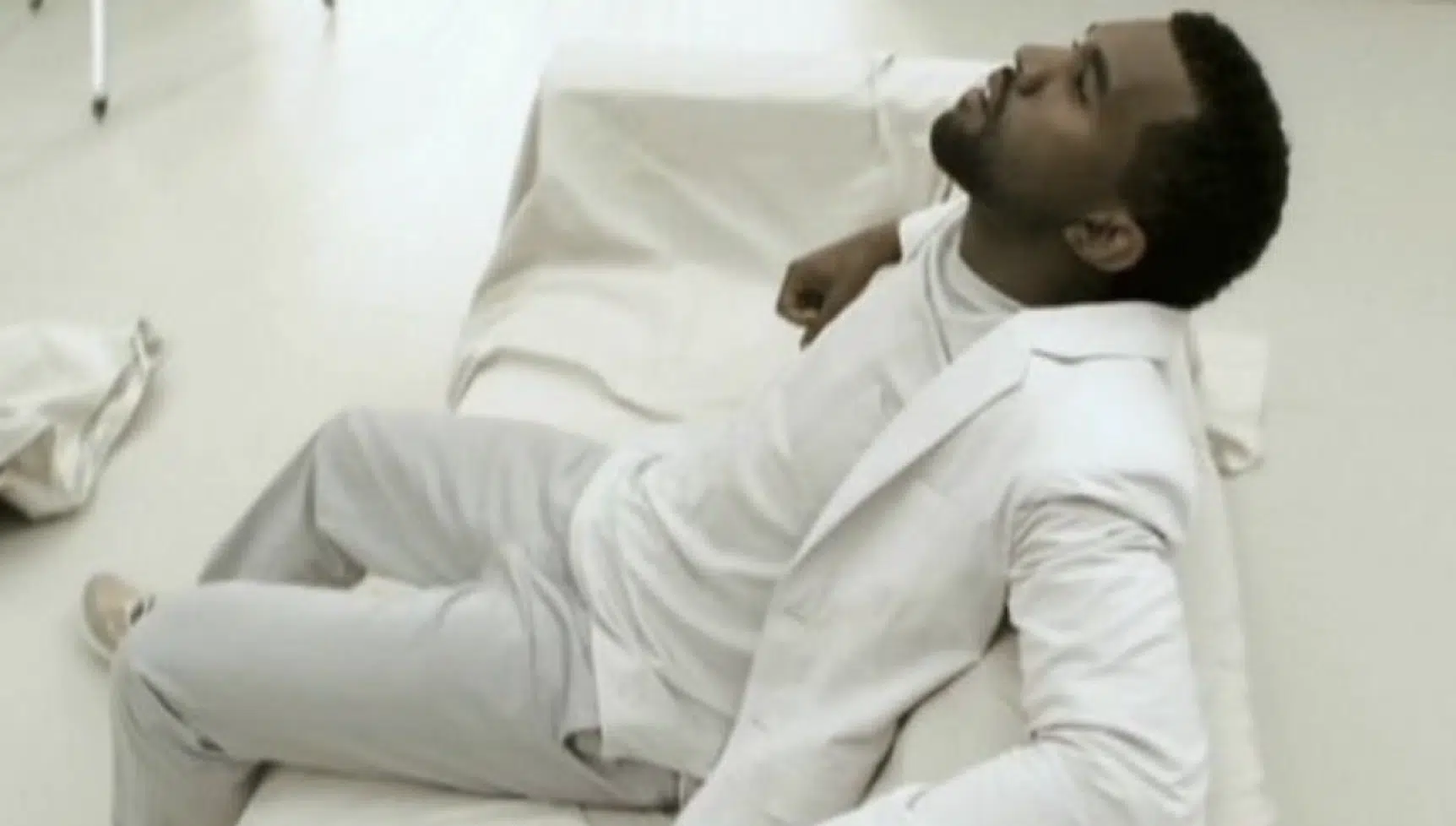
The iconic 808 drum machine wasn’t always the go-to for hit-making musicians; it had to earn its stripes.
And that journey to stardom happened largely thanks to a few songs and artists that knew how to exploit its unique sound.
From the early days of hip-hop to the modern trap and electronic music scene, the 808 has been the backbone of countless hits.
One track that can’t be ignored is Afrika Bambaataa’s “Planet Rock,” released in 1982.
This song literally changed the game for hip-hop music, introducing the TR-808’s:
- Unique, booming kick drum
- Sharp, crisp hi-hats to a broader audience
The 808 was the beatmaker behind that futuristic sound 一 providing a sonic landscape that was both innovative and addictive (which, by the way, the Beastie Boys loved).
Fast forward to the early 2000s, and you’ve got Kanye West’s “Love Lockdown,” a track that boasts 808s with a low, distorted growl that makes the song.
It showcases the machine’s versatility and adaptability to different music styles.
Then we have more modern examples like Travis Scott’s “SICKO MODE,” which features intricate 808 patterns, sliding sub-bass, and a variety of different drum machines’ textures.
It’s a great example of how far the 808 has come and how integral it is in today’s music production.
In the electronic music scene, artists like Aphex Twin have also incorporated the 808, adding complex harmonic progression and fast attack to the drum machine’s sounds.
This created a unique blend of old and new (as I’m sure you love too).
These songs and artists have not only popularized the 808 but also showcased its versatility, proving that it’s far from a one-trick pony.
From there, the 808 quickly evolved from a simple rhythm machine to an indispensable tool for creating intricate beats and textures.
The Anatomy of an 808
What makes the 808 tick, you ask? Understanding its anatomy can help you get the most out of it, creatively speaking.
So, let’s examine the most important parts and why the music world is so entranced by it.
-
The Kick Drum
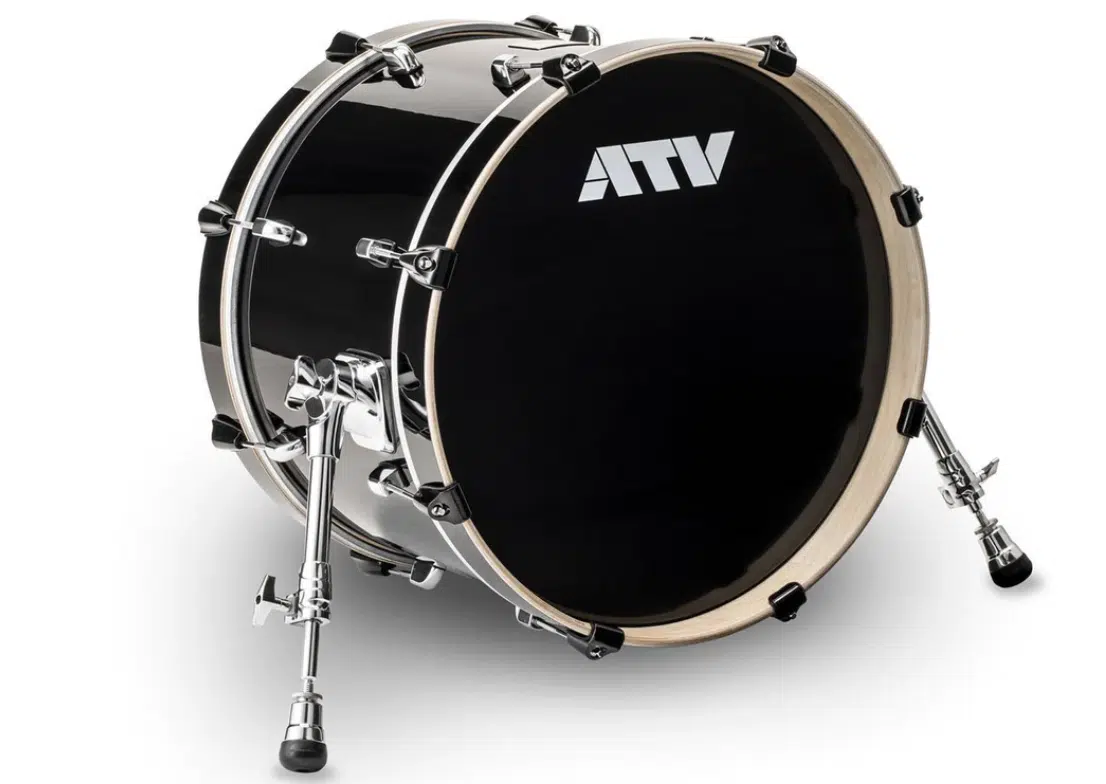
The kick drum in an 808 is more than just a basic drum sound, it’s often the foundation of the song.
When you hear a powerful, booming sound that makes you wanna dance, you’re probably hearing an 808 kick drum.
The 808 kick is unique in its ability to carry both the rhythmic and harmonic content of a song.
Because of this, it’s crucial to select a good sample to serve as the backbone of your track.
The kick can be tuned to specific pitches to fit the harmonic progression of your song, which gives it a more cohesive feel.
In electronic music, the 808 kick drum often serves as the sub-bass 一 filling in the low-frequency spectrum of the song.
This is another reason why choosing a good sample is so crucial…
A bad sample can muddy up your mix and throw off the balance of your song.
NOTE: Never underestimate the power of layering your 808 kick with other kicks or even real drums.
This will give it a fuller sound and allow it to punch through the mix more effectively.
-
The Sub Bass
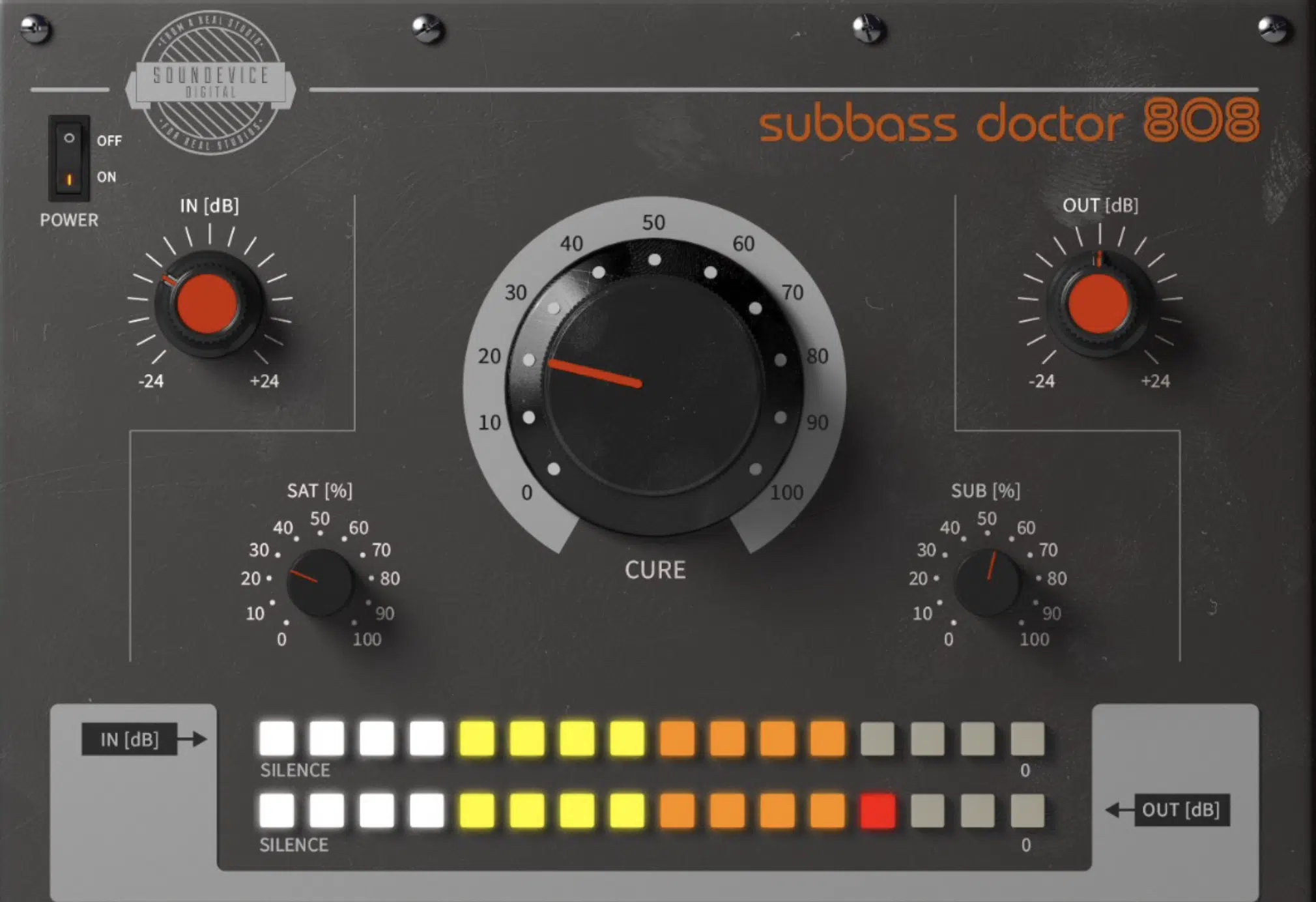
The sub bass is another critical component of the 808, often acting in tandem with the kick drum to provide a rich, full sound.
But be cautious, as too much sub bass can overwhelm the mix.
Different genres (like lofi) have different norms for how prominent the sub bass should be.
In hip-hop and electronic music, the sub bass often takes a leading role; acting almost as a secondary melody.
This is less common in genres like rock or folk, where the sub bass serves more as a supportive element.
It’s essential to understand the interaction between the kick drum and sub bass.
- The kick 一 Usually has a fast attack, providing the punch.
- The sub bass 一 Fills in the body of the sound.
By layering them effectively, you can achieve a robust and well-rounded low end.
Consider using sidechaining techniques to create space for your sub bass.
When the kick hits, the sub bass can duck out of the way briefly 一 allowing each element its own space in the mix.
-
Hi-Hats: The Open Hi-Hat & Closed Hi-Hats
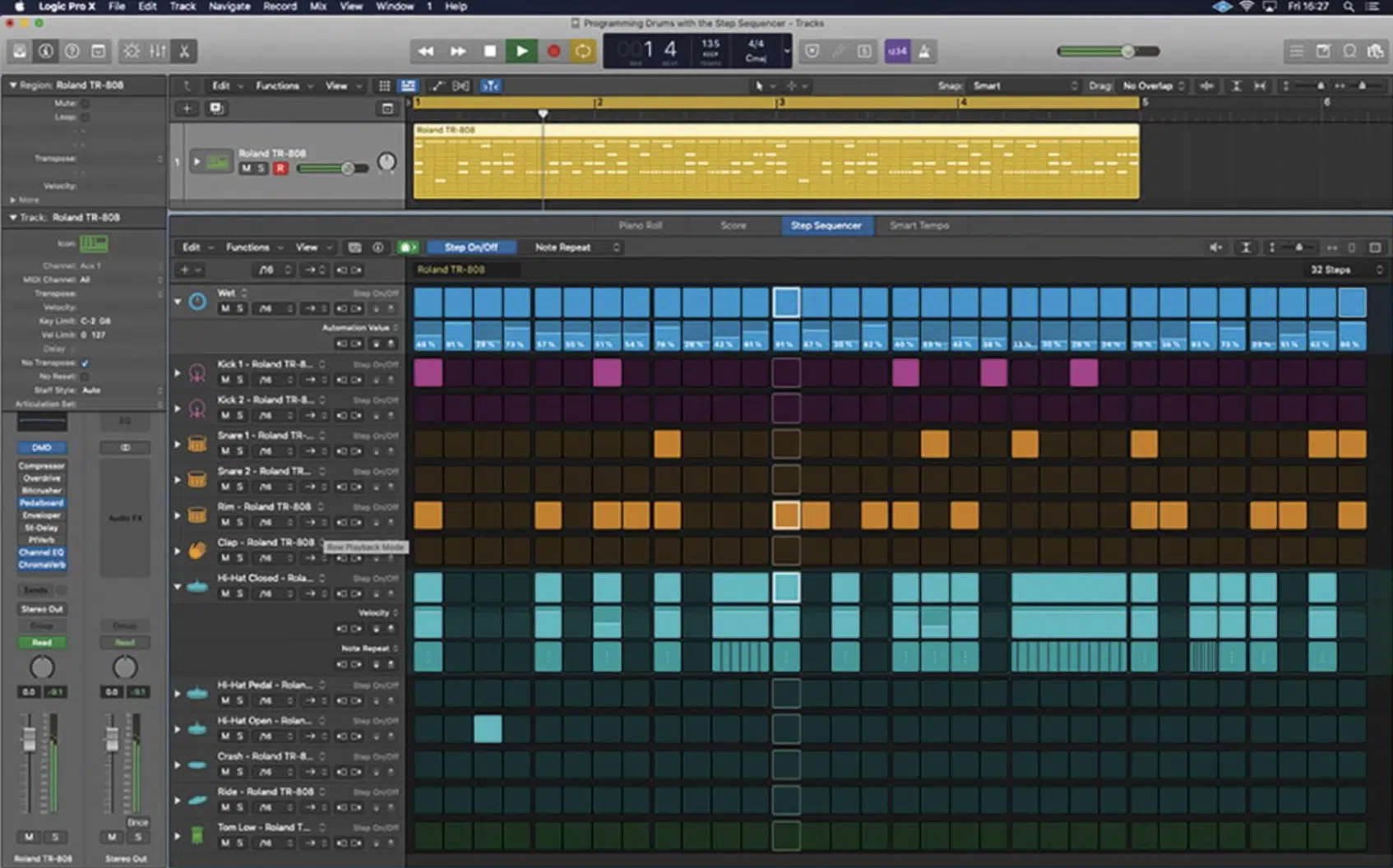
The 808 isn’t all about the low end… the hi-hats are also a crucial part of its sonic identity.
The drum machine offers both open hi-hats and closed hi-hats, each with its unique sound and function.
Closed hi-hats often provide a sense of speed and movement, particularly in hip-hop tracks.
They can be programmed to create intricate rhythms that add a layer of complexity to your beats.
The open hi-hat, on the other hand, brings a different flavor.
It has a longer decay than the closed hi-hat, giving it a more sustained sound.
NOTE: In the context of a song, the open hi-hat can be used to signify a change or to emphasize particular beats.
Balancing the open and closed hi-hats in your song will offer a dynamic range and add nuance to your rhythm section.
Remember, variety is the spice of life, and the same goes for your 808 programming.
Analog Synthesis: How The 808 Generates Sound
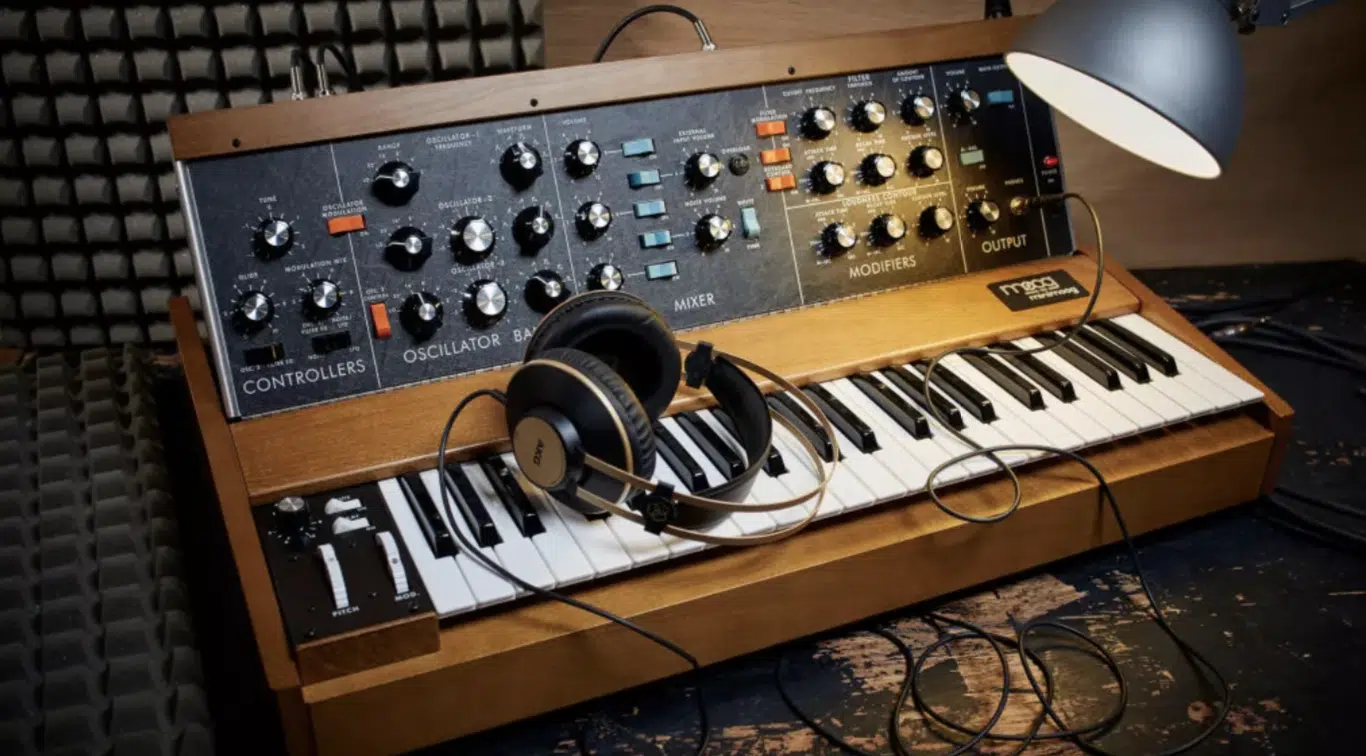
The 808 uses analog synthesis to create its iconic sounds, distinguishing it from other drum machines.
With analog circuits, each drum sound is generated in real-time 一 providing a warm and organic texture that’s hard to replicate with digital means.
Analog synthesis also allows for greater variability in sound.
For example, you can tune your kick drum to different pitches, which offers a range of tonal options.
This level of flexibility is a big reason why the 808 has remained so popular over the years.
The warmth of analog synthesis also means that the 808 often blends well with other instruments, both digital and acoustic.
This makes it a versatile tool for any music producer, regardless of genre.
Why 808 Is Different from an Acoustic Drum Kit
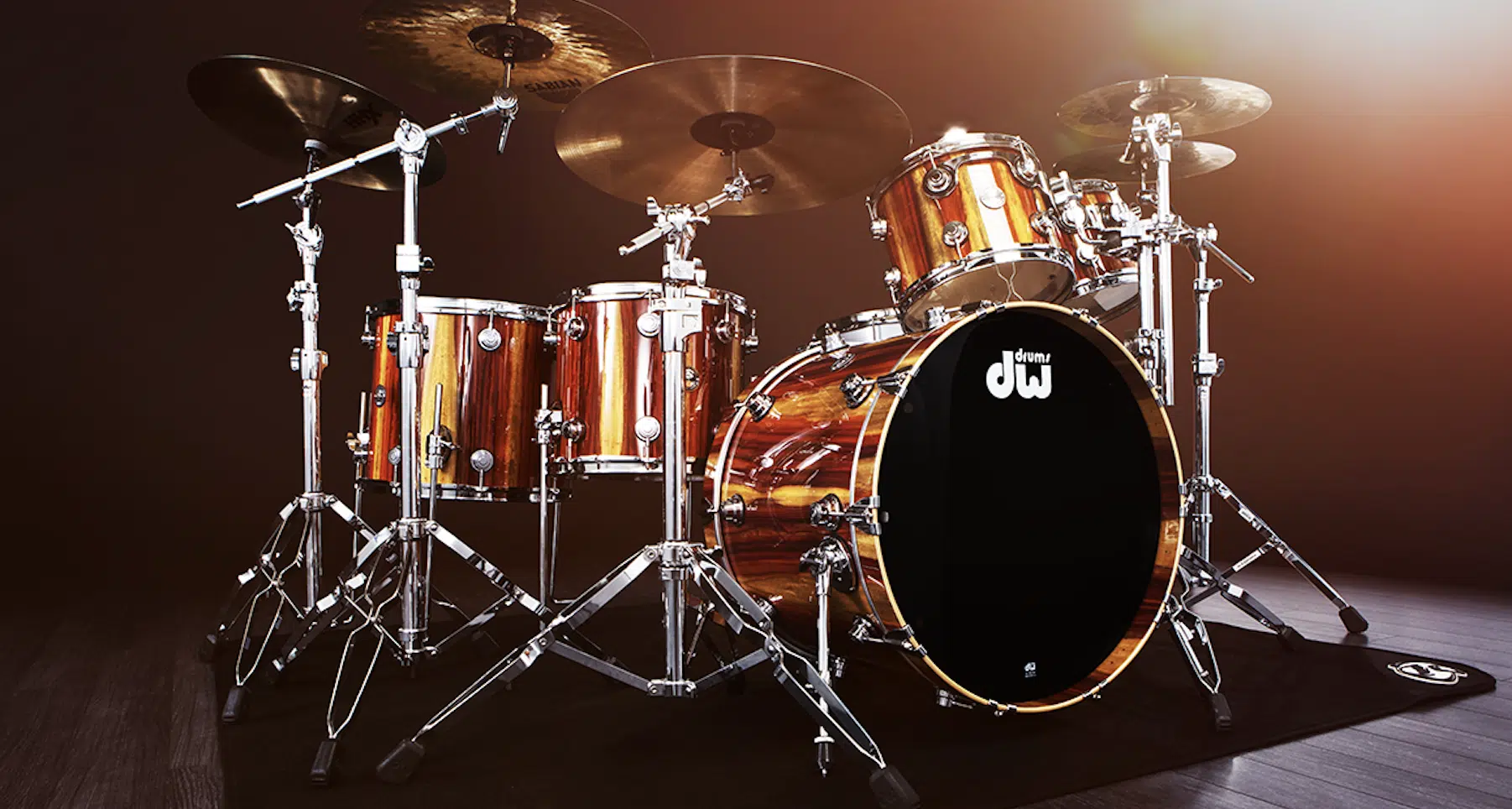
If you’ve ever sat behind an acoustic drum kit, you know the sheer power and dynamic range that come with hitting real drums.
But there’s something magnetic about the 808 that makes it stand out in a completely different way.
Firstly, the 808 is built on analog synthesis rather than actual drum samples.
Unlike an acoustic drum kit (which is created from physical materials like wood and metal) each sound in the 808 is crafted electronically.
This creates a sonic palette that’s just not achievable with real drums.
The bass drum can go from a super tight, clicky sound to a long, resonant boom.
It’s a playground for anyone interested in electronic music but offers a stark contrast to the authentic timbres and resonances of an acoustic drum kit.
Another big difference lies in the level of control you have over each drum sound.
In an acoustic setting, the sound of the drums is influenced by various factors such as:
- The size of the room
- The quality of the drums
- The way you hit them
With an 808, you can tweak every parameter precisely, from the decay of the kick drum to the specific pitch of the hi-hat.
This provides an unparalleled level of customization.
How to Get Creative with Your 808s
Now that you have a good understanding of the 808’s unique features and capabilities, how can you leverage them for your creative pursuits?
Now, let’s delve into some advanced techniques and tips for getting the most out of this iconic machine.
-
Tuning and Pitch: Make It Your Own

One of the most effective ways to personalize your 808 sounds is through tuning and pitch adjustments.
Unlike a static sample, an 808 allows you to modify the pitch of your:
- Kick drum
- Sub bass
- Even your hi-hats
This not only allows for a cohesive musical structure but also opens up new creative avenues.
Consider aligning the pitch of your 808 kick drum with the key of your song.
Doing so creates a sense of harmony and unity throughout your track 一 making the low end feel more integrated.
Another interesting technique is pitch modulation.
By slightly modulating the pitch of your kick or sub bass, you can add a sense of movement and life to your beats.
This is super effective in electronic genres like trap or future bass, where a dynamic low end can make your track stand out.
Pitch can also affect the timbre and emotional impact of your music.
- A lower-pitched 808 一 Can bring a dark, moody atmosphere.
- A higher pitch 一 Might impart your track with a sense of urgency or excitement.
Getting creative with your 808s can seriously enhance your tracks appeal.
As well as help your beats to stand out, of course.
-
Layering 808s for a Fuller Sound
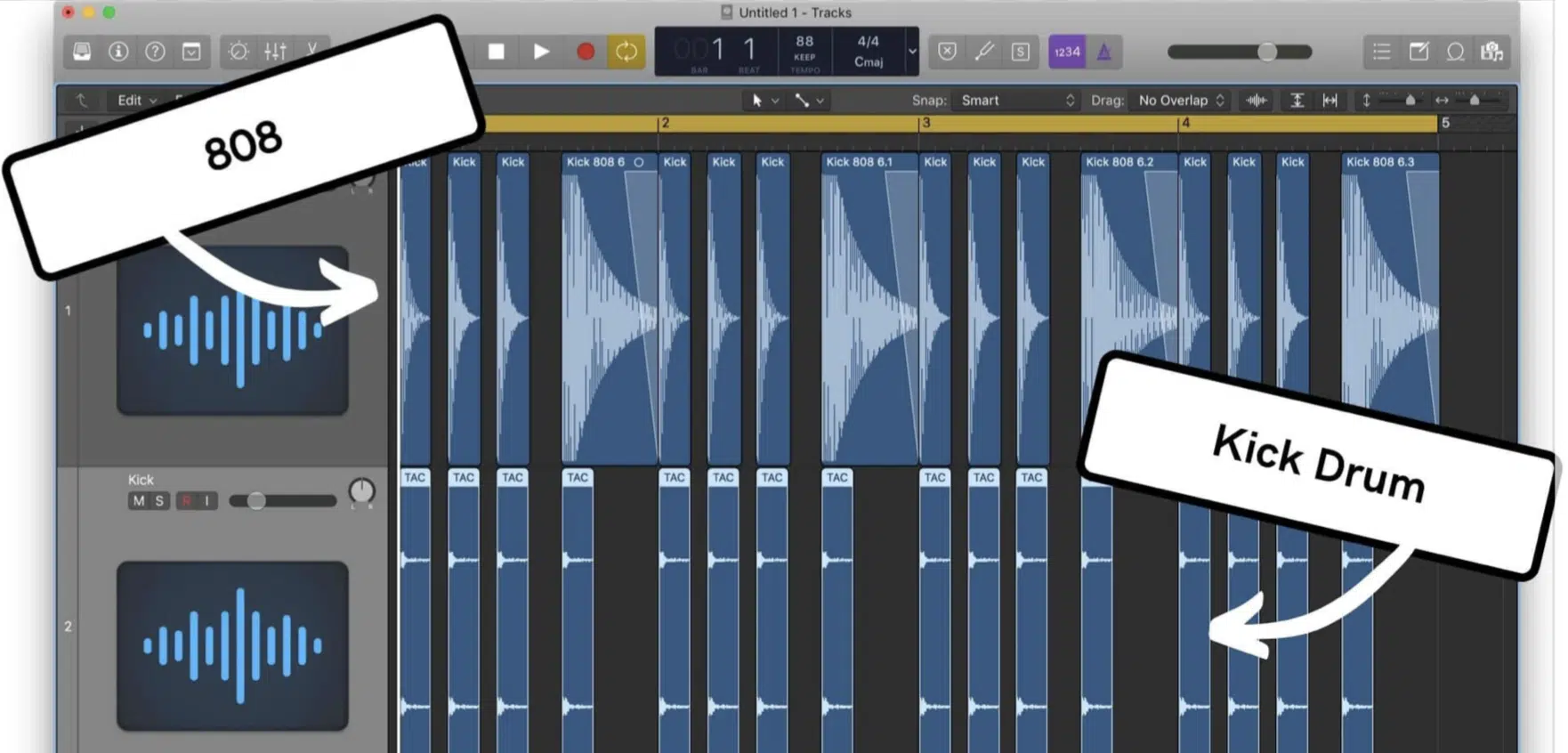
Layering is a common technique used to create a fuller sound, and it applies exceptionally well to 808s.
You can layer two different 808 samples to create a track that has both the punch of a hard-hitting kick and the rumble of a deep sub bass.
However, when layering, phase alignment is critical.
Misaligned phases can lead to a thin, weak sound instead of a full and rich one.
NOTE: Always check that the waveforms of your layered sounds are reinforcing, not canceling each other out.
Layering can also extend beyond 808s…
Consider layering your 808 kick with an acoustic kick drum sample (above).
This adds a layer of organic texture to your beats, providing the best of both worlds:
- The predictability and appeal of an 808.
- The dynamic nuance of an acoustic drum.
Also, don’t be afraid to experiment with unconventional layering.
Adding elements like white noise or even melodic instruments to your 808 can result in an entirely unique sound.
This will help you push the creative boundaries of your music and capture peoples’ attention.
-
Effects and Modulation: Go Beyond the Basic
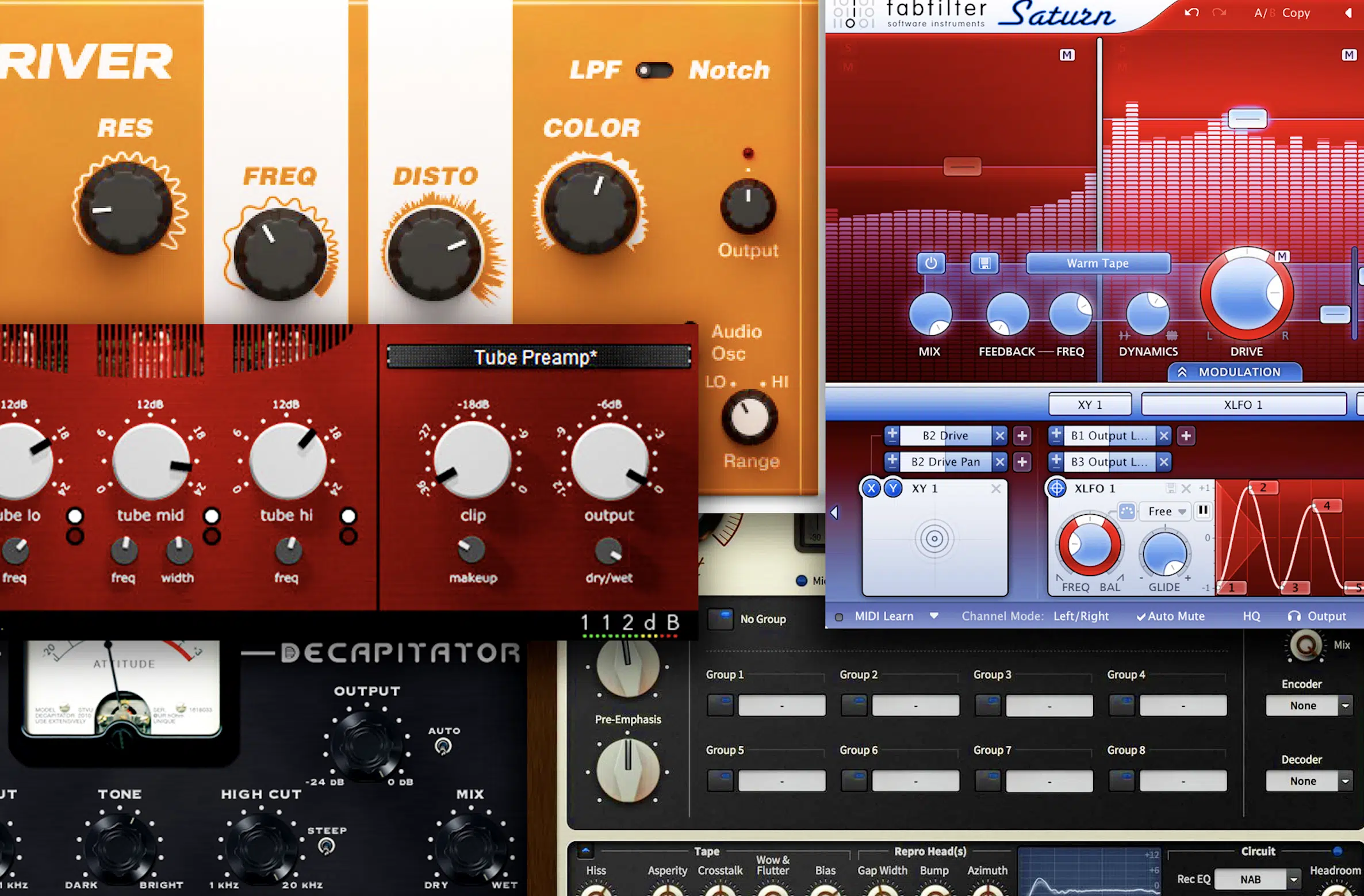
While the 808 is iconic for its clean, powerful sounds, adding audio effects can breathe new life into this vintage machine.
Common effects like distortion or saturation can add character to your 808s 一 making them grittier or warmer according to your preference.
Modulation effects like chorus or flanger can add width and depth to your 808.
This will help it become more interesting and dynamic.
NOTE: Be careful with such effects on the low end, as they can muddy your mix if overused.
Automation is your friend when it comes to effects.
Automating parameters like wet/dry mix or decay time can add movement to your track, making it more engaging to the listener.
Don’t overlook the power of spatial effects like reverb and delay, especially on your hi-hats and snares.
While it’s generally advisable to keep your low end clean, adding a touch of reverb to your hi-hats can create a sense of space and depth in your track.
Advanced Techniques
You’ve gotten the basics down, but there’s always room to grow. What are some advanced techniques that can set your work apart?
-
Sampling and Re-sampling Your 808s
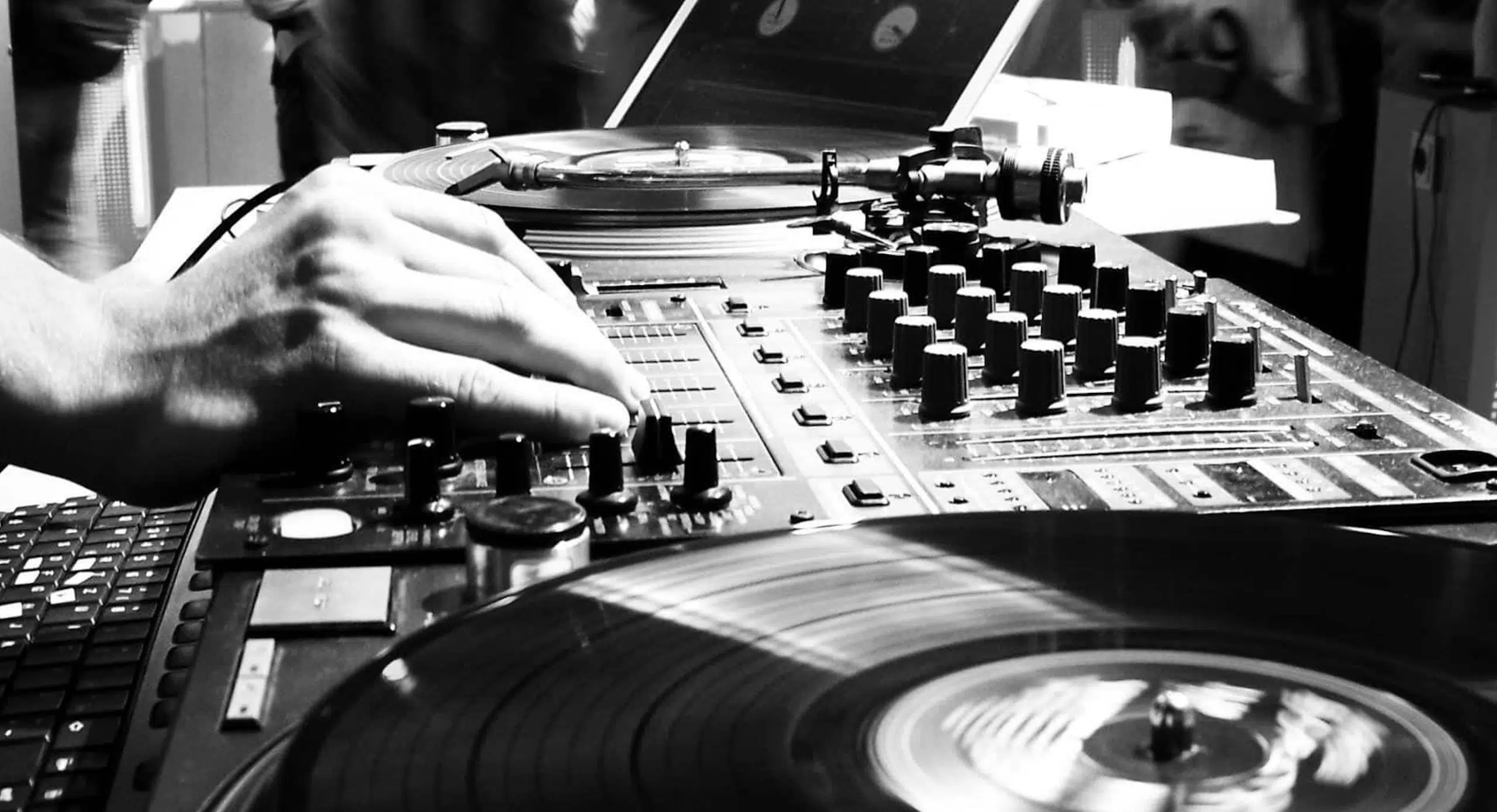
Sampling and re-sampling are advanced techniques that can give your 808s a unique texture.
For example, you could sample your 808 kick and run it through a vintage hardware sampler to imbue it with a distinct character.
Re-sampling involves recording your processed 808 sounds and then importing them back into your DAW as new samples.
This allows you to layer or further process these sounds 一 creating entirely new textures and rhythms.
Sampling can also refer to incorporating other sounds into your 808s.
Imagine sampling a real bass guitar and layering it with your 808 sub bass to create a blend of organic and electronic elements that is rich and engaging.
Well, you can do this with no problem.
Re-sampling is particularly effective for creating custom build-ups or breakdowns.
You can create transitions that are tailored perfectly to your track by manipulating:
- The pitch
- Decay
- Other parameters of your re-sampled 808
Remember, it’s all about thinking outside the box and experimenting with different techniques and methods.
The sky isn’t even the limit when it comes to music production.
-
The Secrets of Sidechaining
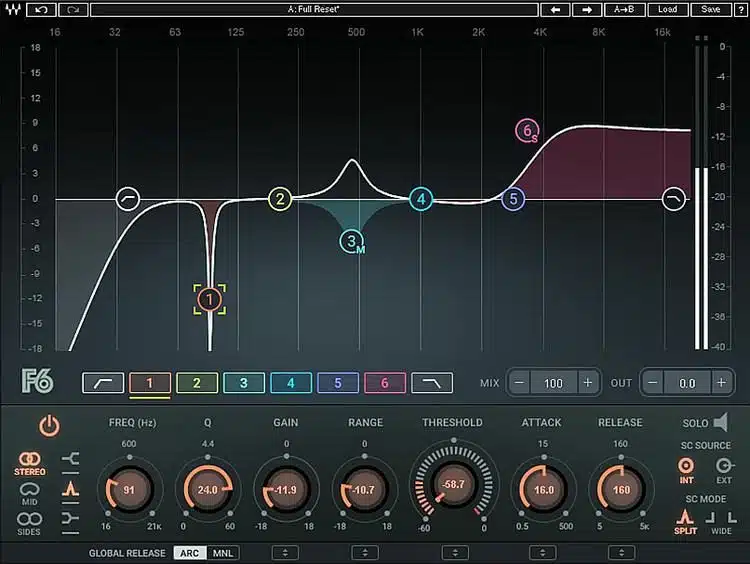
Sidechaining is an advanced technique that’s almost synonymous with modern electronic music.
In the simplest terms, it’s a way to let one sound control another.
It’s commonly used to let the kick drum “duck” other elements in the mix (like the sub bass or even lead synths) to make room for the kick to punch through.
But you can get more creative with sidechaining…
For instance, instead of ducking your sub bass every time your kick hits, try doing the opposite for a unique rhythmic effect.
Or sidechain your hi-hats to your snare 一 creating an interplay of elements that can make your track more interesting.
Sidechaining can also be used to create rhythmic effects.
By sidechaining a pad or lead synth to an 808 element with a unique rhythm, you can impose that rhythm onto other elements of your track.
It’s worth noting that sidechaining doesn’t always have to be dramatic to be effective.
Sometimes a subtle application can add a sense of depth and movement to your track without being immediately noticeable.
-
Parallel Compression: Add Thickness and Punch

Parallel compression is another advanced technique that can make your 808s sound more impactful.
The idea is to blend an uncompressed signal with a heavily compressed one.
This way, you can achieve a sound that retains its dynamics while gaining the “punch” or “thickness” of compression.
NOTE: This technique works particularly well on 808 kick drums, where you want to preserve the transient punch while also enhancing the sustain and body of the sound.
It’s like having your cake and eating it too, sonically speaking.
You can also use parallel compression on your entire 808 mix 一 creating a more cohesive and impactful low end.
This can be particularly useful in genres like hip-hop or trap, where a powerful low end can make/break a track.
Like all compression techniques, parallel compression should be used judiciously.
Overdoing it can lead to a squashed and lifeless sound, which is the last thing you want for your 808s.
Bonus: How to Mix 808s like a Pro
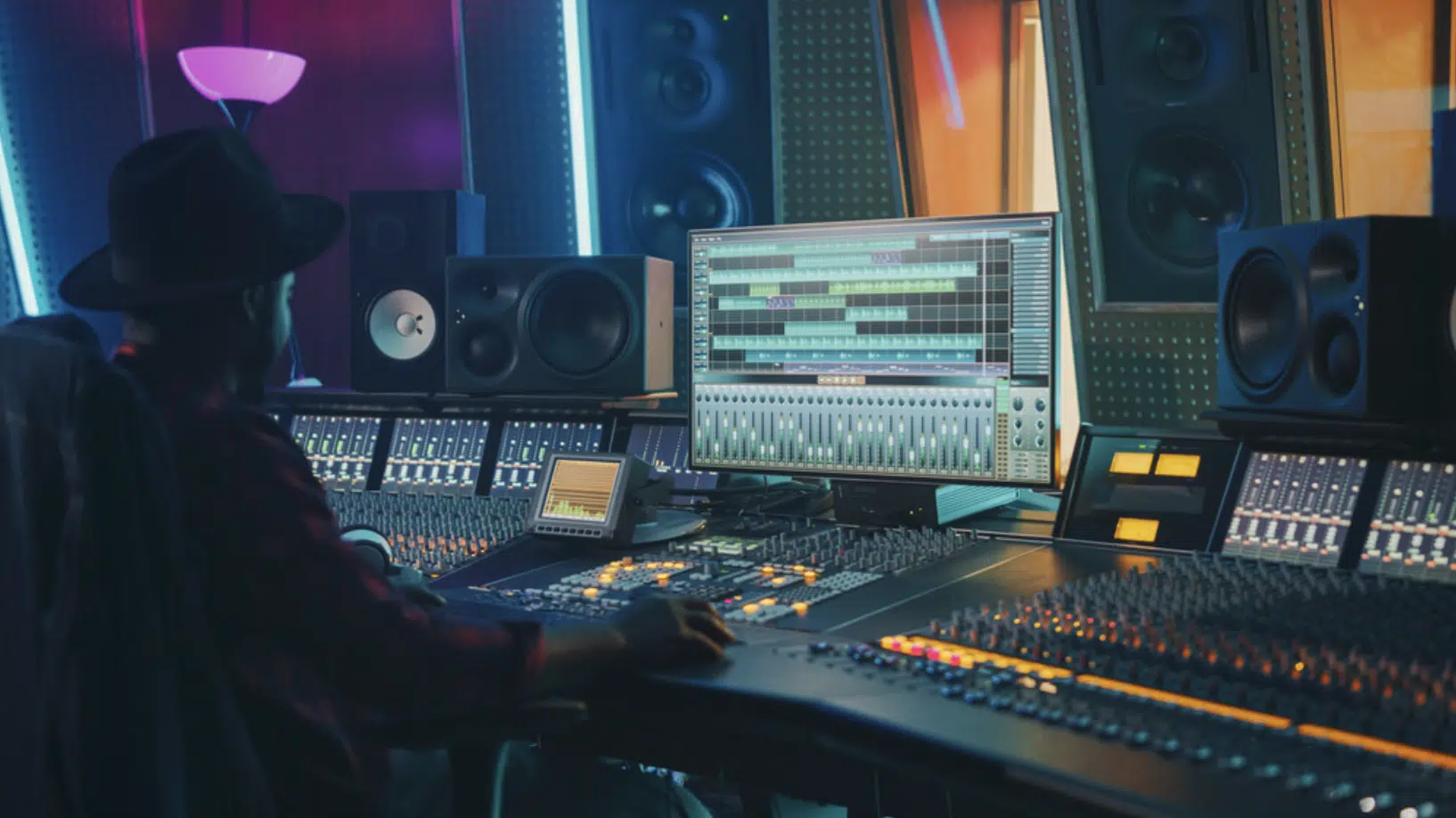
Mixing is the final frontier in making your 808s fit perfectly in a track.
One of the most important aspects of mixing 808s is achieving clarity in the low end.
This often involves carving out space in the mix for your 808 elements to shine, usually through the use of strategic EQ cuts on other instruments that might clash with your 808.
In addition, you can use harmonic saturation or even distortion to add harmonics to your 808s.
This will make them more audible on smaller speakers that can’t fully reproduce low frequencies.
It can help your 808s cut through in a variety of listening environments.
Don’t forget about dynamics control.
While 808s are known for their consistent and controlled sound, applying light compression can help tighten the low end and make it more impactful.
NOTE: Be cautious not to over-compress, as it can strip away the 808’s unique dynamic characteristics.
Lastly, consider the stereo image of your 808s.
It’s generally a good idea to keep your low-end elements in mono to maintain a solid foundation.
However, subtle stereo widening effects can be applied to higher frequency 808 elements (like hi-hats or claps) to add a sense of space and dimension.
With all of these tips, you can get back to the good stuff: making more hit records.
808: Final Thoughts
As you now know, 808s can do much more than just lay down a basic beat 一 they can inject life, emotion, and a distinct sonic identity into your tracks.
When used creatively, an 808 can make your song instantly recognizable, setting it apart in the saturated music world.
Whether you’re aiming for hard-hitting hip-hop beats, the pulsating rhythms of trap, or the expansive sonic landscapes of future bass, mastering the 808 is your key to musical innovation.
If you’re eager to put all these tips and techniques into practice but aren’t sure where to start, I’ve got something revolutionary for you: this Free 808 Sample Pack.
This is a pack that includes 10 high-quality 808s with matching loops.
They’re modeled after the styles found in some of the biggest hit beats in modern music.
Whether you’re making hip-hop, Travis Scott type beats, R&B, trap, future bass, or UK drill, these samples provide a fantastic starting point.
So, as we’ve seen, the 808 has come a long way from its initial conception as a rhythm machine to becoming the heartbeat of numerous music genres.
Now, it’s up to you.
Fire up your DAW, load those Free 808 Samples, and start making those beats that will set your music apart.
Until next time…







Leave a Reply
You must belogged in to post a comment.